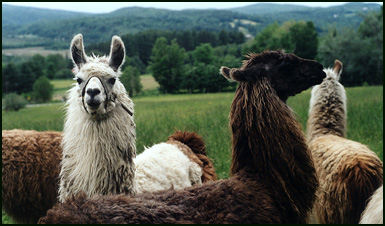

Once there, we were introduced to the three writer/teachers and asked to choose with whom we would like to work and then assigned to one. Ted Gup wasn't my first choice, because I had read a book by one of the others, but I'm feeling that he was a best choice for me at this stage. Ted is a former investigative reporter for the Washington Post, now a college professor and a freelance writer whose area of expertise leans toward the CIA. (In fact, I was going through some magazines after I got home and found an article by Ted in Mother Jones titled "Clueless in Langley.") What does that have to do with nature writing? Not much, directly, but clarity, conciseness, and knowing your facts do. As David Brown (the director) explained when he described his choices of the workshop leaders, being a writer who is a good teacher is what counts.
I've included in this month's column two essays which were written at the workshop.

Inhale deeply. Exhale. Again. Inhale so deeply that my lungs push my diaphragm down and my belly out. Exhale hard. I exchange gritty particulates from Colorado's polluted air for moist molecules from Vermont leaves. With the inhaled scent of damp earth comes also the surprising scent of last year's dry leaves and, from somewhere unseen, unnamable fresh flowers.
Three hundred feet from the main road, a veery's downward spiral erupts and, then, a little further, the fluted tones of a hermit thrush. Stop. This is what I've longed for all year, amid the roar of heavy traffic and the stench of diesel fumes. Stop. I breathe, sing again.
Thrush sings, and an ache begins to rise within, a sweet joy that is food and breath. Mosquitoes bite my legs. Swat. Swat. Wiping mosquito and blood off my fingers, I walk on slowly, as footfall-soft as possible. Thrush cadences echo as the bird begins at different places on the scale, sometimes impossibly high. I don't attempt to find the singer. He's hidden among a hundred trees. I stop every few steps and exchange more grit for leaf, and listen.
The plumy ends of false solomon's seal arc toward the trail; long-stemmed white violets fill a dozen feet of trail edge. Yellow violets hunker down among their leaves. I look for small branches of daphne, but it has disappeared, here a few years and then gone, perhaps to return in another decade, as I have been gone from East Montpelier for half a decade, when I meant to be away for two years. Funny how the years stretch out, yet shrink.
Fallen-down stonewalls line both sides of the trail. The pastures they walled in long ago have grown to trees. Branches from big-leafed sugar maples and tall, slender ash trees arch over the road. Copses of spruce create dark shadows. The late-day sun slants beneath the treetops, glowing on a small glade of light green, foot-high ferns. Their simple beauty, gardened by the universe, increases the ache inside.
Step. Breathe. Step. Breathe. The air's rich cleanness in my lungs is finer than making love. It is breath-making. The hermit thrush music rings forth, filling the whole of my spirit.
"I could try again," she said, "or we could walk from here."
Susan and I had no idea how far "from here" to where we were going would be. Still, we both agreed to walk up the gravel road where the hill had become a brook during these last two days of rain. When the road flattened out, we found ourselves in a herd of goats and a couple of heifers and some sheep. Ann reached out and scratched the head of a brown heifer when she walked by. I was nibbled by the inquisitive goats – pants legs, the buckles on my little pack, and my jacket tugged in two directions. These little guys were friendly.
We waded through them and kept walking up the dirt road but soon found that we had company. A dozen youngsters seemed to have decided that these humans were going some place exciting. They were a mix of yearlings and kids, one kid a little billy with six inch horns.
Once we reached the trailhead, we headed for the long loop around the crown of Barr Hill. We tried shooing the goats back down the road, but they kept trotting after us. A black yearling with a white neck kept up with the woman in the lead, most often Ann. Two white yearlings, one with hooves in dire need of trimming, and a brown kid or two filled the second rank. Another three kept the third rank, and trailing the pack were four or five of the littlest kids, mostly black and whites. I hung back with them, as I liked going slowly over the small ledges.

When it came to wide puddles in the trail, every goat edged around them. They found the highest bit of land between two side-by-side puddles and avoided soaking their feet just as we humans did. When we stopped at outlooks, several goats peered over the cut-over area as if on tour. "There's Haystack, or rather, its base. What a pity the clouds aren't higher."
We hadn't lost any by the time we got back to the trailhead, and when we reached the rest of the herd, a young man from the nearby farm had set up paddock fencing. We led our walking comrades in and left them nosing the grasses. They would have jumped into the car if we had invited them.